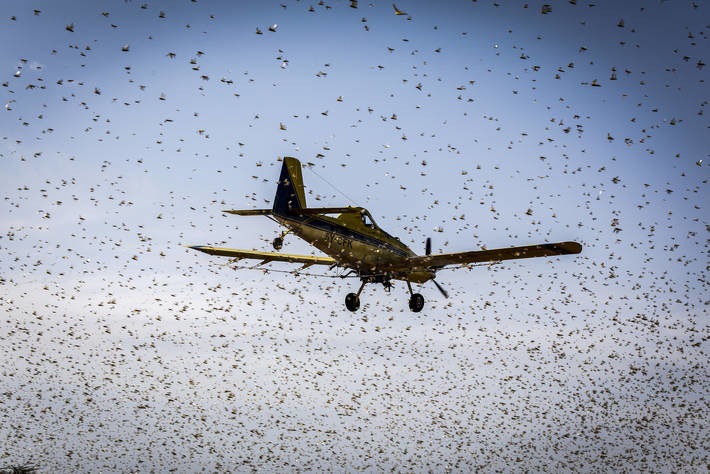NAIROBI, KENYA — The United Nations Food and Agriculture Organization (FAO) on Feb. 21 described an infestation of Desert Locusts that is plaguing East Africa as “extremely alarming” particularly in the countries of Kenya, Ethiopia and Somalia.
A recent FAO report said, “It is the worst outbreak of Desert Locusts seen in the region for decades. Tens of thousands of hectares of croplands and pasture have been damaged in Ethiopia, Kenya and Somalia with potentially severe consequences in a region where 11.9 million people are already food insecure. The potential for destruction is enormous. A locust swarm of one square kilometer can eat the same amount of food in one day as 35,000 people.”
The FAO said the infestation is spreading beyond Africa’s borders into the Middle East. The FAO noted that on Feb. 20, immature swarms reached the shores of the Persian Gulf in Kuwait, Bahrain, Qatar and the southwest coast of Iran.
“More swarms are likely during periods of southerly winds,” the FAO said. “Breeding is in progress of both sides of the Red Sea in Egypt, Sudan, Saudi Arabia and Eritrea, where hopper groups, bands and immature adult groups have formed that is likely to cause swarms to form shortly.”
In Kenya, perhaps the hardest hit country in East Africa, Desert Locusts have damaged 470,000 acres of crops and destroyed 741,000 acres of vegetation in Wajir, according to Wajir Governor Mohamed Abdi.
Mandera Governor Ali Roba said more than 80% of that county’s land mass is under locust invasion, adding that an estimated “220 to 350 tonnes of crops are destroyed each day in Mandera.”
The FAO said the infestation began in East Africa in December 2019.






